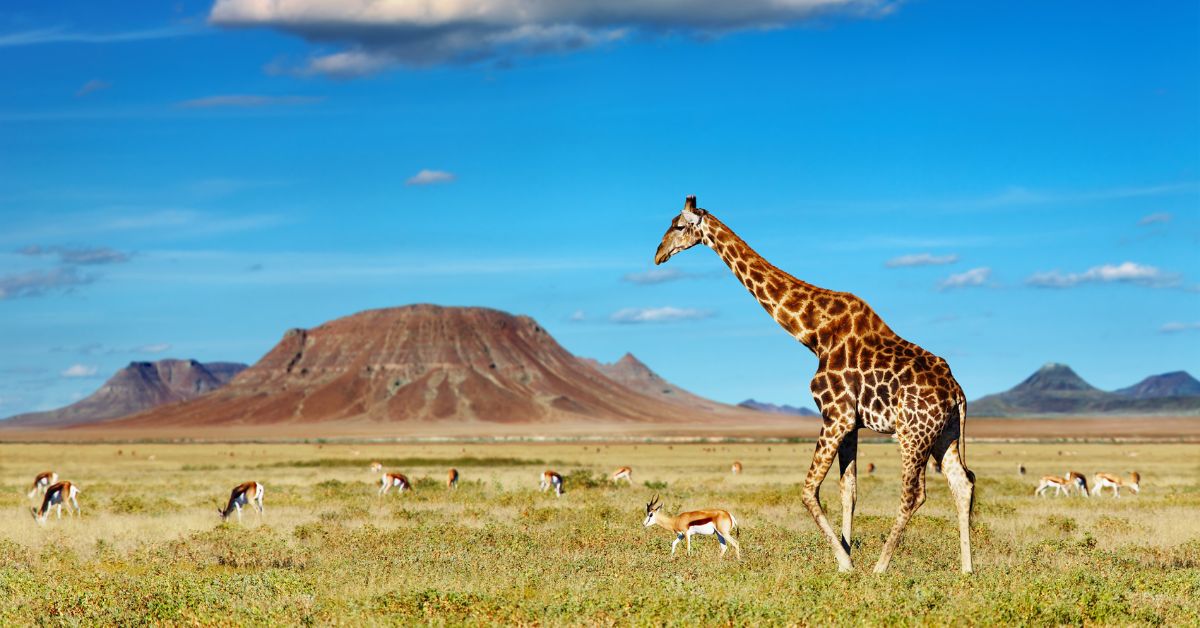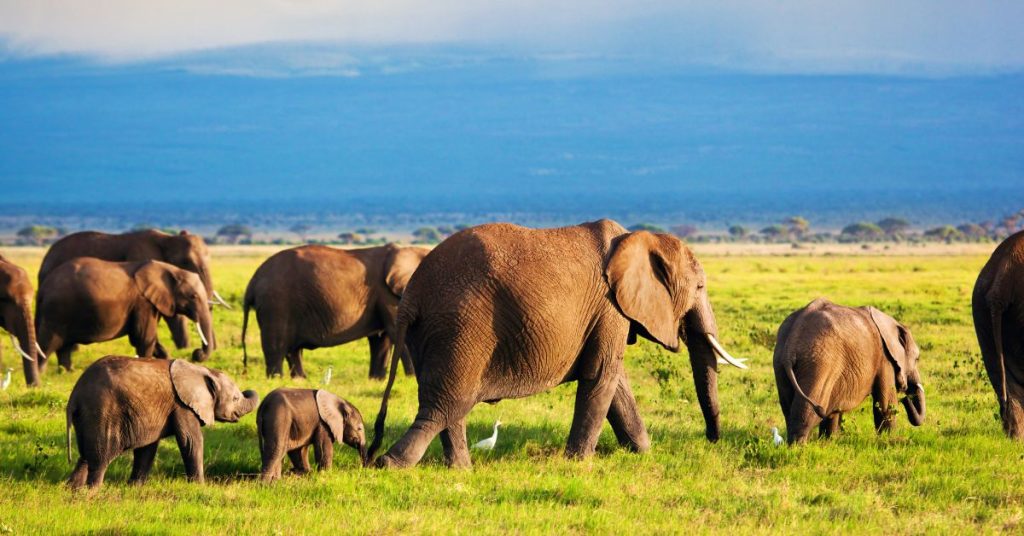What Safari Tours Are and Why They Are Popular
Safari tours are organised experiences that allow people to see wild animals in their natural environments. These tours are designed to help visitors safely get close to wildlife while learning about the ecosystems they live in. Over the years, safari tours have gained popularity because they offer a real connection to nature that is difficult to find elsewhere. Unlike a zoo or a nature reserve where animals are kept in controlled areas, safari tours give you the chance to see creatures behaving naturally. You witness hunts, migrations, herds grazing and predators moving through the bush. This raw experience is what makes safaris unforgettable for many people.
Different Types of Safari Tours

Walking Safaris
Walking safaris are all about slowing down and experiencing the environment on foot. Instead of watching from a vehicle, you become part of the bush. Guided by experts, you walk through areas known for wildlife activity, learning how to track animals and read the signs of nature. This type of safari is ideal for people who want to experience the smells, sounds and sights of the wild up close. It’s a more personal and intense way to see nature, as every rustle in the grass and footprint in the sand takes on new meaning.
Game Drive Safaris
Game drive safaris are what most people think of first. You sit in an open or closed 4×4 vehicle and are driven through reserves or parks looking for animals. Guides are trained to spot creatures that you might miss yourself, and they know how to get close without disturbing the wildlife. These drives can happen early in the morning, late in the afternoon, or even at night. They offer a good balance between comfort and adventure, making them suitable for first-timers or those who want to cover a lot of ground.
Boat Safaris
Boat safaris are a refreshing alternative to land-based tours. Conducted on rivers, lakes or floodplains, they let you observe animals that live near or in the water. You might see hippos, crocodiles, or elephants drinking along the shores. Birdlife is also abundant around waterways, making boat safaris a favourite for birdwatchers. These tours offer a different angle on wildlife viewing and are often more relaxed than game drives.
Fly-In Safaris
Fly-in safaris involve taking a small aircraft directly to remote wilderness areas. This type of safari is perfect for those who want to save time or reach places that are hard to get to by road. Flying over the bush offers a unique view of the landscape, and you can often spot herds of animals from above. Once on the ground, the safari continues with game drives, walks or other activities.
Self-Drive Safaris
Self-drive safaris give you the freedom to explore at your own pace. You rent a vehicle and drive yourself through parks or reserves, following maps and suggested routes. This option is good for independent travellers who like to set their own schedule. It requires some preparation and a good understanding of the rules to stay safe, but it can be highly rewarding.
How the Seasons Affect Safari Tours
Dry Season
The dry season is often considered the best time for safaris because animals are easier to find. Water sources become limited, and wildlife gathers around the remaining rivers, waterholes and pans. Vegetation thins out, making it easier to spot animals through the bush. Roads are more accessible, and there are fewer insects like mosquitoes. However, because it’s a popular time, there can be more vehicles around popular areas.
Wet Season
The wet season transforms the bush into a lush green paradise. While the thick vegetation can make spotting animals a bit harder, this time of year offers other rewards. Newborn animals are common, as many species give birth when food is plentiful. Birdwatching is also excellent during the wet season because migratory birds arrive. The scenery is stunning, with dramatic skies and flowering plants everywhere.
Common Animals You Might See on Safari
The Big Five
The Big Five refers to lions, leopards, rhinoceros, elephants and buffalo. Originally a term used by hunters, today it represents the most popular animals that visitors hope to see on safari. Each has its own unique behaviour and challenges when it comes to spotting them. Lions might be seen lounging under trees, elephants could be moving in herds across the plains, and leopards may require sharp eyes as they are masters of camouflage.
Lesser-Known Animals Worth Watching
While the Big Five get a lot of attention, many other animals make a safari special. Wild dogs are incredible to watch when they are hunting. Giraffes moving gracefully through the trees are a beautiful sight. Warthogs, zebras and antelope of all kinds bring energy and colour to the bush. Birds, reptiles and even insects play important roles in the ecosystem and are often overlooked by first-time visitors.
Choosing the Right Safari for Your Interests
Wildlife Focused Safaris
These safaris aim to give you the best chance of seeing a wide variety of animals. Guides focus on tracking wildlife and explaining their habits. These tours are perfect for anyone who wants to see as many species as possible, from predators to grazers to scavengers.
Birdwatching Safaris
If you are passionate about birds, specialised birdwatching safaris are available. Guides know where to find rare and interesting species, and the slower pace of these tours allows for detailed observations. Binoculars are a must, and early morning outings are common because that is when bird activity is highest.
Photography Safaris
Photography safaris are built around getting the perfect shot. Vehicles might be specially modified to give photographers better angles. Guides position the vehicle carefully and understand how light and animal behaviour affect photo opportunities. These tours usually allow for longer stops at sightings so that photographers can wait for the right moment.
Family Friendly Safaris
Some safaris are designed with families in mind, offering shorter drives, kid-friendly activities and guides who are good at keeping young ones engaged. These tours focus more on fun and education rather than ticking off a long list of animal sightings.
What to Expect During a Typical Safari Tour
Morning Game Drives
Morning drives often start early, sometimes before sunrise. This is when many animals are most active, hunting, grazing or moving to new areas. The cool temperatures make it comfortable to be out, and the soft light is perfect for photography. Drives can last several hours, with stops for coffee or tea along the way.
Afternoon and Evening Activities
After a break during the heat of the day, safaris often continue in the late afternoon. This is another active time for animals. The lighting becomes warmer, and shadows grow longer, creating beautiful views. Some tours include a sundowner stop, where you can watch the sunset over the bush with a drink in hand.
Night Drives
Night drives offer the chance to see nocturnal animals that are not active during the day. Using a spotlight, guides search for creatures like hyenas, bush babies, and even leopards. Night drives reveal a different side of the bush, full of sounds and movements that are not obvious during daylight hours.
Packing Essentials for a Safari
Clothing
Neutral-coloured clothing is best because it blends into the environment. Bright colours can startle animals. Long sleeves and trousers help protect against the sun and insects. A good hat, sunglasses and a lightweight jacket for early mornings are important. Comfortable, closed shoes are a must for walking safaris.
Gear and Accessories
Binoculars are almost essential for spotting distant animals. A camera with a decent zoom lens is useful for capturing memories. Sunscreen, insect repellent and a reusable water bottle are also important. A small backpack can hold your essentials during drives and walks.
Tips for Taking Better Wildlife Photos on Safari
Best Camera Settings
Using a fast shutter speed helps freeze the action when animals are moving. A moderate aperture keeps your subject sharp while softly blurring the background. ISO settings may need to be increased in low light situations like early mornings or late afternoons.
Timing Your Shots
Waiting for the right moment makes all the difference. Instead of snapping too early, watch the animal’s behaviour. Patience often rewards you with better photos. Catching a lion yawning, an elephant splashing water or a bird taking flight can turn a good photo into a great one.
Being Patient for the Right Moment
Wildlife photography is not about rushing. Animals don’t work on human schedules. Sitting quietly and waiting increases your chances of seeing natural behaviour rather than quick glances or retreating backs.
Understanding Safety During Safari Tours
Listening to Guides
Guides are trained to understand animal behaviour and environmental risks. Following their instructions is vital. They know when to move, when to stay still and when to back off. Ignoring them can put everyone at risk.
Keeping a Safe Distance
Getting too close to wildlife is dangerous. Even seemingly calm animals can react unpredictably. Keeping a safe distance not only protects you but also respects the animals’ space and reduces stress on them.
Respecting Animal Behaviour
Signs like raised tails, mock charges or vocalisations often mean an animal feels threatened. Recognising and respecting these signals can prevent dangerous encounters. Observing quietly from a respectful distance makes for a safer and more rewarding experience.
Myths About Safari Tours People Still Believe
Safari Tours Are Always Dangerous
While safaris involve wild animals, they are generally very safe when rules are followed. Most incidents happen when people ignore guides or try to get too close to animals. Listening, staying alert and acting responsibly keeps risks low.
You Will Definitely See the Big Five Every Trip
Wild animals move freely, and there are no guarantees on what you will see. Each safari is unique. Sometimes you find rare animals, other times you see common ones. Patience and managing expectations are part of the experience.
Safaris Are Only for the Wealthy
Safaris can range from affordable self-drives to luxury fly-ins. There are options to suit different budgets. Planning and researching in advance help find a safari that matches what you want to experience.
How Safaris Support Wildlife Conservation
Park Fees and Permits
Money from park entrance fees and permits goes directly into conservation efforts. It helps fund anti-poaching teams, habitat protection and research projects that aim to protect species for future generations.
Community Projects
Many safaris work alongside local communities. They provide jobs, fund schools and support clinics. When local people benefit from tourism, they are more likely to protect the animals and environments around them.
Anti-Poaching Efforts
Tourism supports efforts to stop poaching by funding ranger patrols, equipment and education programmes. Strong tourism activity often means stronger protection for vulnerable species.
Sustainable Tourism Practices on Safari
Minimising Impact on the Environment
Sticking to roads, limiting noise and avoiding litter all help reduce human impact. Responsible safari operators focus on low-impact practices to keep the environment healthy.
Choosing Ethical Safari Operators
Choosing tours that support fair treatment of animals and local people helps create positive change. Ethical safaris avoid practices like baiting animals or disrupting habitats just to get a better photo.
Final Thoughts on Planning an Unforgettable Safari Tour
Planning your safari carefully increases the chance of a rewarding experience. Understanding the types of safaris, the best times to go, and what to expect makes the experience smoother and more enjoyable. A safari is not just a trip; it is an experience that stays with you long after you leave the bush.



